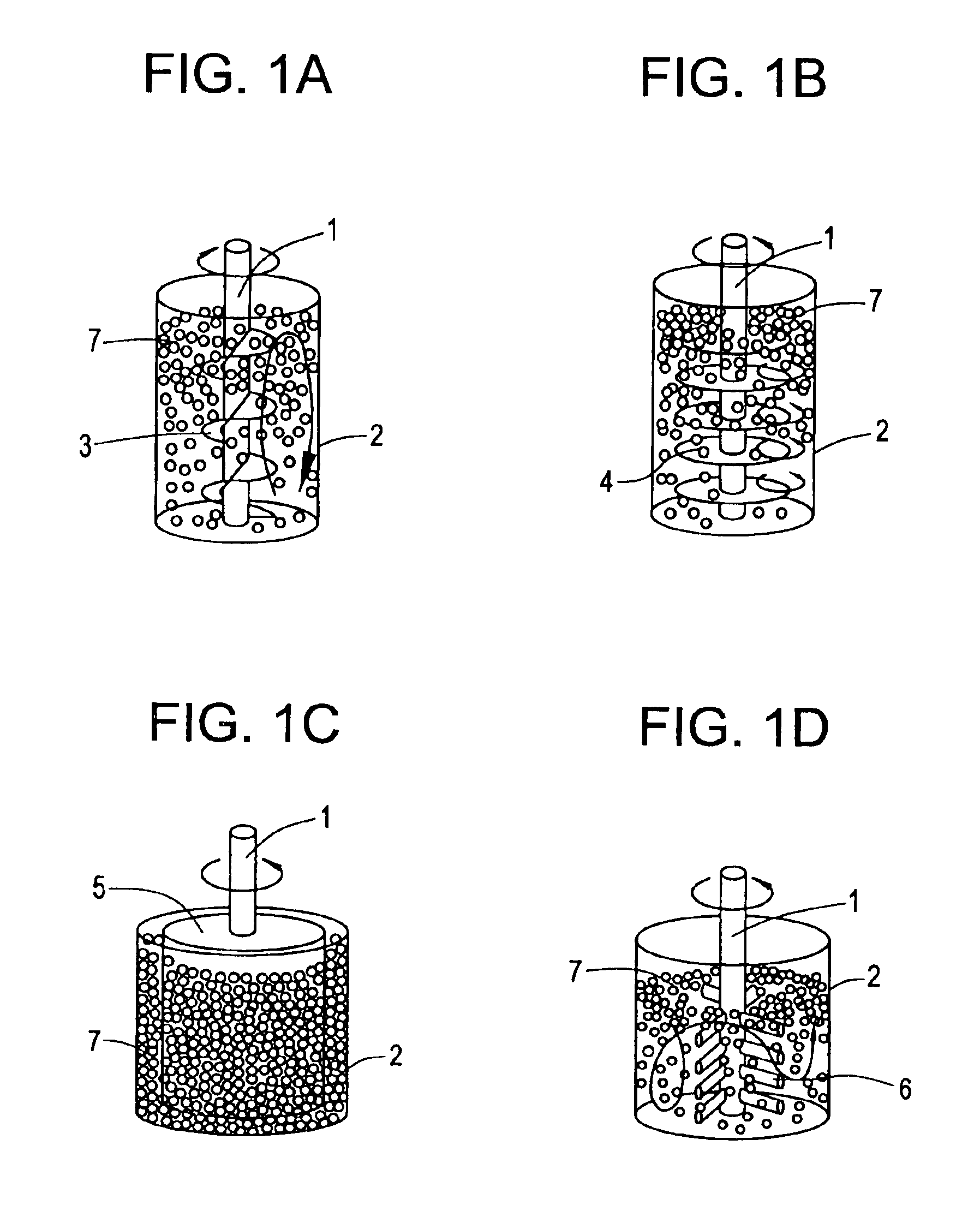Method for producing an inorganic oxide powder
a technology of inorganic oxide and powder, which is applied in the direction of magnesia, oxygen/ozone/oxide/hydroxide, grain treatment, etc., can solve the problems of lowering the mechanical strength of ceramics, unable to obtain satisfactory high density ceramics, and difficult continuous pulverization, etc., to achieve high mechanical strength and high density
- Summary
- Abstract
- Description
- Claims
- Application Information
AI Technical Summary
Benefits of technology
Problems solved by technology
Method used
Image
Examples
example 1
[0037]In a pulverization chamber (having an inner capacity of 25 dm3) of a dry-way continuous-type ultrafine pulverizer (trade name: Dynamic Mill MYD 25-XA type, manufactured by Mitsui Mining Co., Ltd.), balls made of alumina with 5 mmφ were placed at a 75% packed ratio thereof to the pulverization chamber capacity. Into the chamber, an air at a room temperature with a dew point of −30° C. or lower, which was supplied from an air supply apparatus, was continuously introduced at 1 Nm3 / h through a pipeline connecting the air supply apparatus with the pulverization chamber. Simultaneously, aluminum oxide (having a BET specific surface area of 8.5 m2 / g, a density of 3.99 g / cm2 and an α type crystal structure) was continuously introduced therein at 15 kg / h and was pulverized to obtain an aluminum oxide powder. The supplied aluminum oxide powder was pulverized and quantitatively discharged out of the pulverizer as an aluminum oxide powder. The introduction amount of air at that time was 2...
example 2
[0039]An aluminum oxide powder was obtained in the same manner as in Example 1 except that the introduction amount of air was changed (from 26,600 parts by volume in Example 1) to 90,900 parts by volume based on 100 parts by volume of the aluminum oxide. The obtained aluminum oxide powder had a sintering density of 3.95 g / cm3.
example 3
[0040]An aluminum oxide obtained by an alkoxide method (and having a purity of 99.99%, a BET specific surface area of 5.5 m2 / g and an α-type crystal structure) was introduced at supplying speed of 15 kg / h into the same dry-way continuous-type ultrafine pulverizer as used in Example 1 (using balls made of alumina in the same manner as in Example 1) and was pulverized in a dry way. The supplied aluminum oxide was pulverized and quantitatively discharged out of the pulverizer as an aluminum oxide powder. During pulverization, the electric power of the motor for driving the medium-stirring means was constant. The specific energy consumption calculated from the electric power of the motor and the supplying speed of the aluminum oxide was 0.76 kWh / kg. The obtained aluminum oxide powder had a BET specific surface area of 7.8 m2 / g and a sintering density of 3.97 g / cm3.
PUM
 Login to View More
Login to View More Abstract
Description
Claims
Application Information
 Login to View More
Login to View More - R&D
- Intellectual Property
- Life Sciences
- Materials
- Tech Scout
- Unparalleled Data Quality
- Higher Quality Content
- 60% Fewer Hallucinations
Browse by: Latest US Patents, China's latest patents, Technical Efficacy Thesaurus, Application Domain, Technology Topic, Popular Technical Reports.
© 2025 PatSnap. All rights reserved.Legal|Privacy policy|Modern Slavery Act Transparency Statement|Sitemap|About US| Contact US: help@patsnap.com

